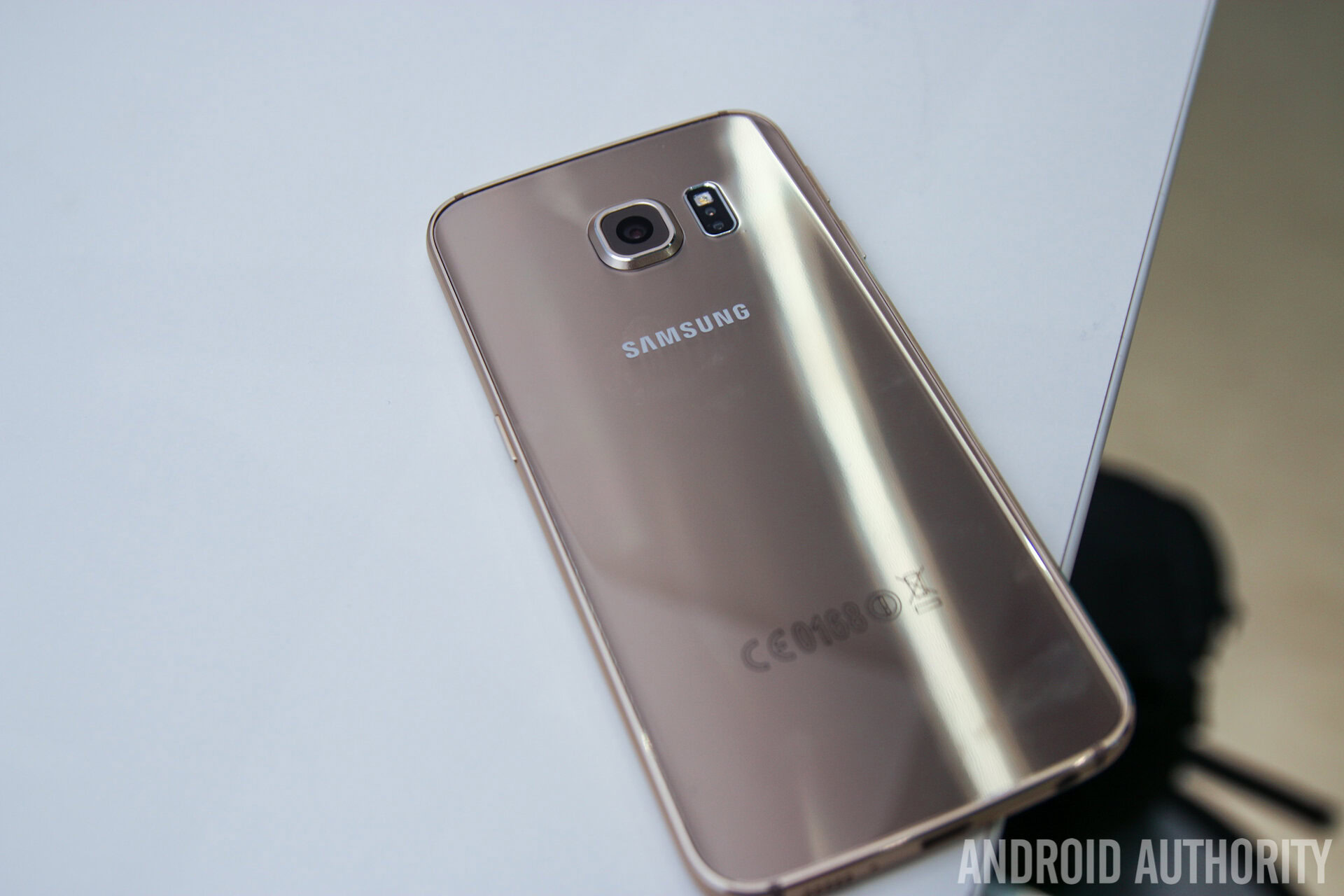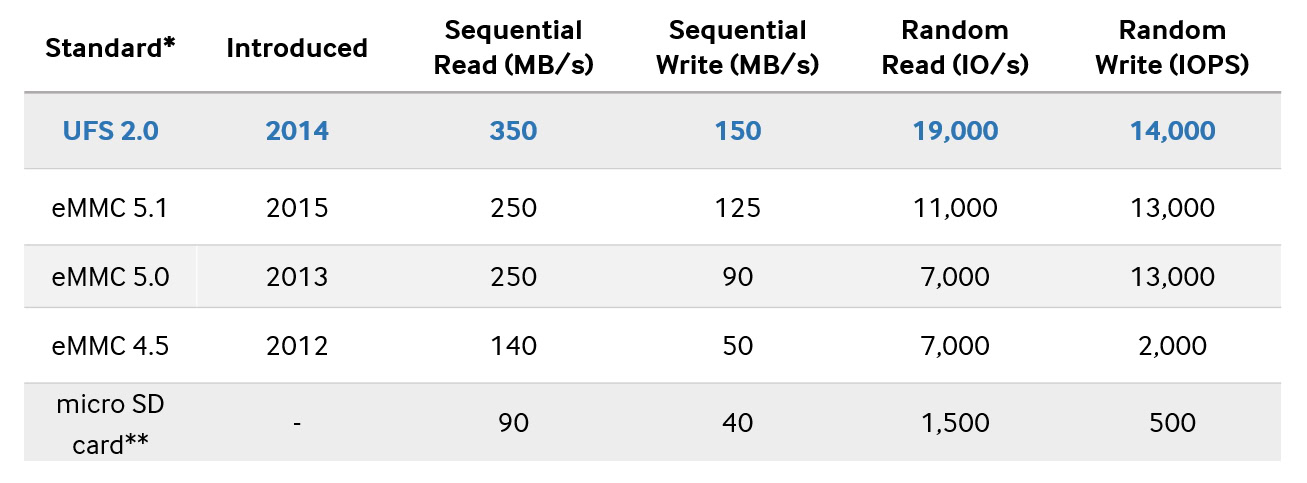Affiliate links on Android Authority may earn us a commission. Learn more.
Samsung switches to LPDDR4 and UFS 2.0 memory, but what does it mean?

Earlier this week we took a look at Samsung’s new Exynos 7420 SoC, which is just one of the new technologies squeezed into the Galaxy S6. Samsung is also leading the way with faster LPDDR4 RAM memory and internal memory designed with the new UFS 2.0 standard.
UFS 2.0 internal memory replaces the common eMMC 5.0 / 5.1 standard found in most last generation handsets. We already covered the technology last week, and essentially it is designed for faster reading and writing from internal storage, allows for simultaneous read/write processes, and prioritizes incoming commands to execute them as quickly as possible.

Although flash memory doesn’t particularly mind how data is arranged, sequential read and write speeds can be important when dealing with large file sizes. Particularly when it comes to large HD video, lossless audio or game assets, which are usually stored neatly in large sequential chunks of data on the hard drive. But rather than relying purely on Samsung’s speed numbers, a newly published AndroBench comparison gives us a closer look at what the standard is capable of compared with last generation handsets.
However, benchmarks don’t necessarily represent real world performance and you’re not going to notice these speed differences in day to day tasks. But when it comes to particularly media heavy reading or writing of data, UFS 2.0 is clearly a cut above eMMC 5.0.
New LPDDR4 RAM is the other half of Samsung’s latest memory arrangement, which is a successor to commonplace LPDDR3. Qualcomm’s Snapdragon 810 SoC also features LPDRR4 memory.
Rather than storing large, permanent files, RAM is temporary memory used by applications and the operating system for whatever needs processing. LPDDR4 can offer up to a 50 percent performance boost than LPDDR3, depending on the implementation. The aim of the game here is increased memory bandwidth, which allows for faster communication between the RAM memory and the handset’s processors.
This is particularly important when it comes to memory intensive applications. Again we’re looking at media centric scenarios, where large chunks of data have to be moved around with minimal delay. One example is slow-motion video, where 120 image frames have to be stored in RAM memory each second. At 2K or 4K resolutions, that’s a lot of data to be pushing around, and additional bandwidth is very important in these types of applications. Gaming is also a potential benefactor here, as mobile GPUs have to pull resources from the main memory pool. Bandwidth requirements increase greatly at larger display resolutions.
Samsung’s Galaxy S6 LPDDR4 has a 1552MHz clock speed. Assuming the standard dual-channel 32-bit design as previous Exynos chips, this gives us a bandwidth of 24.8GB/s. For comparison, the Snapdragon 810 offers a similar bandwidth, while the older LPDDR3 in the Snapdragon 801 has a bandwidth of 12.8GB/s and the Exynos 5433 offers 13.2GB/s.

However, these are just upper limits and real world results rarely sustain this bandwidth. There also is not a direct one-to-one relationship between bandwidth and performance. Our own AnTuTu test shows a decent performance gain, but not the suggested 50 percent boost. Like UFS 2.0, you’re only likely to notice this improvement in some specific scenarios.
On top of a speed boost, LPDDR4 lowers the memory’s core voltage to 1.1 volts, down from 1.2 volts, and implements low voltage swing logic at 0.4 volts. This aims to help save on energy consumption, which is especially important in battery powered smartphones, given how often the memory is accessed.
In summary, the move to LPDDR4 and UFS 2.0 are complementary improvements to system memory, which will prove particularly useful when it comes to high resolution media playback and capture, gaming, and larger file transfers and downloads. The change here is just one of the many improvements introduced in the Samsung Galaxy S6 that should (hopefully) lead to an overall superior experience when compared to Galaxy handsets of the past.